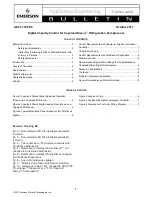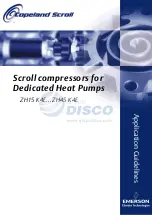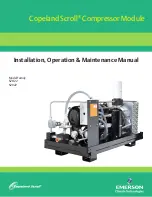
MAINTENANCE
/
REP
AIR
TROUBLESHOOTING
OPERA
TION
ASSEMBL
Y /
INST
ALLA
TION
SAFETY /
SPECIFICA
TIONS
GETTING ST
AR
TED
3
GENERAL SAFETY INFORMATION (CONTINUED)
Compressor parts may be hot even if the unit is stopped.
9. Keep fingers away from a running compressor; fast moving and hot parts will cause injury and/or burns.
10. If the equipment should start to vibrate abnormally, STOP the engine/motor and check immediately for
the cause. Vibration is generally a warning of trouble.
11. To reduce fire hazard, keep engine/motor exterior free of oil, solvent, or excessive grease.
Never remove or attempt to adjust safety valve. Keep safety valve free from paint
and other accumulations.
Never use plastic (PVC) pipe for compressed air. Serious injury or death could result.
Never attempt to repair or modify a tank! Welding, drilling or any other modification will
weaken the tank resulting in damage from rupture or explosion. Always replace worn, cracked
or damaged tanks.
Drain liquid from tank daily.
12. Tanks rust from moisture build-up, which weakens the tank. Make sure to drain tank regularly and
inspect periodically for unsafe conditions such as rust formation and corrosion.
13. Fast moving air will stir up dust and debris which may be harmful. Release air slowly when draining
moisture or depressurizing the compressor system.
Spraying Precautions
Do not spray flammable materials in vicinity of open flame or near ignition sources
including the compressor unit.
14. Do not smoke when spraying paint, insecticides, or other flammable substances.
15. Use a face mask / respirator when spraying and spray in a well ventilated area to prevent health and fire
hazards.
16. Do not direct paint or other sprayed material at the compressor. Locate compressor as far away from
the spraying area as possible to minimize overspray accumulation on the compressor.
17. When spraying or cleaning with solvents or toxic chemicals, follow the instructions provided by the
chemical manufacturer.






































